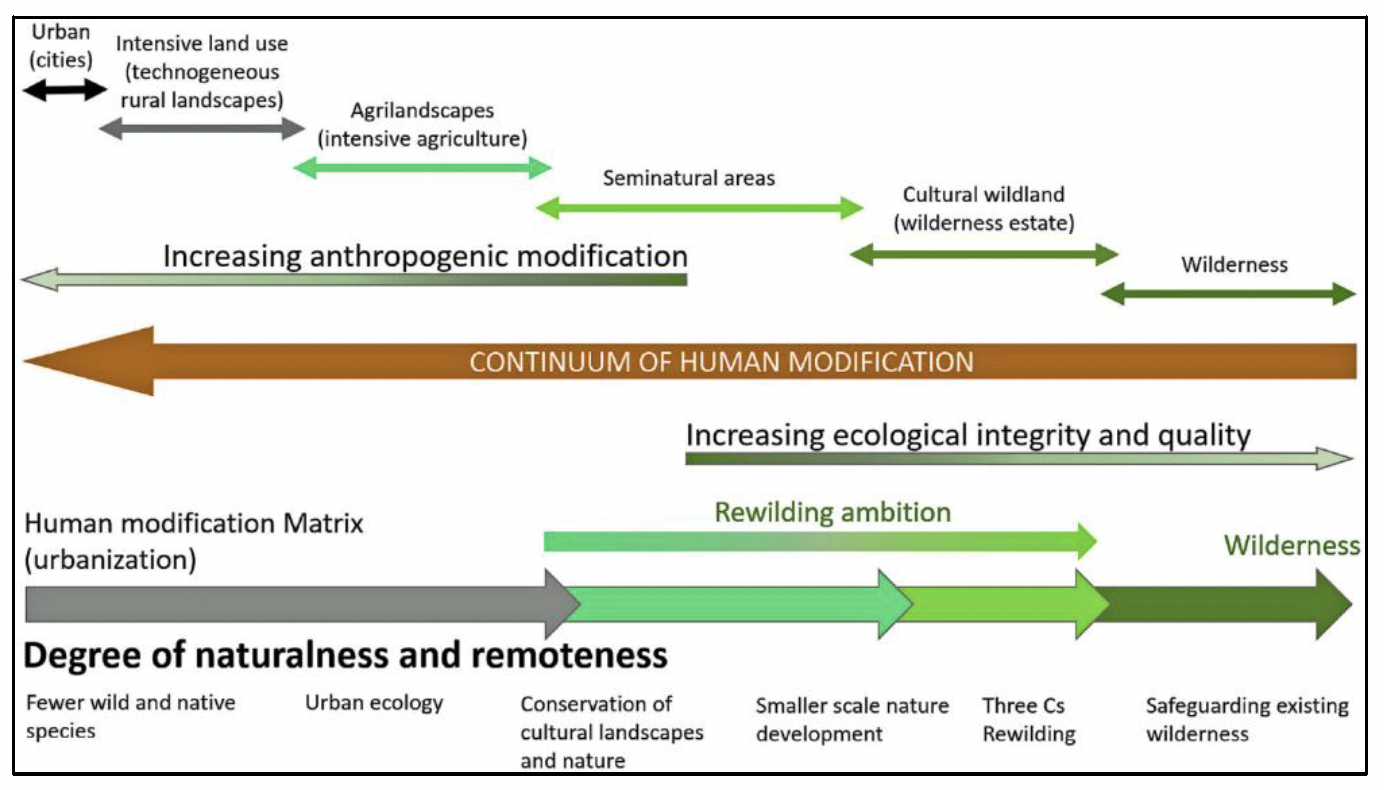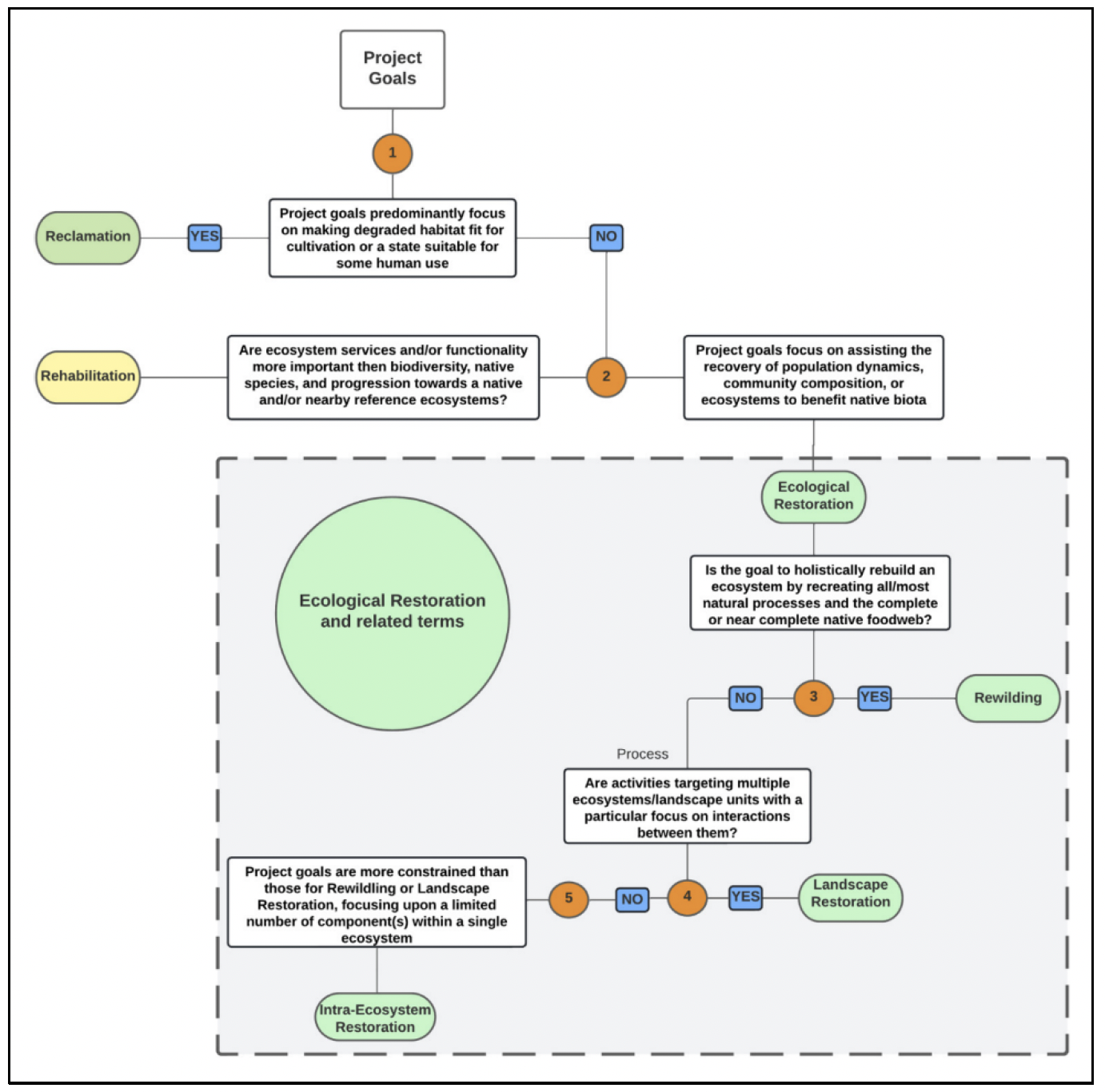Defining rewilding for Scotland's public sector: research findings
Main findings of research investigating debates around the term ‘rewilding’, its relevance in a Scottish context, and to propose a working definition of the term suitable for use by the public sector in Scotland
Annex 3. Relating Rewilding to Other Terms and Concepts
This annex illustrates some examples of how rewilding has been related to other terms and concepts in conservation and environmental management.
One set of ideas on the relationship between rewiding and other concepts comes from the the IUCN Rewilding Thematic Group. Carver et al. (2021) propose a diagram (Figure 3) which distinguishes the degree of 'human modification' of landscapes as guiding the degree to which one may expect to be able to reduce human control or dominance – suggesting that rewilding is not an appropriate term in highly modified environments, where instead terms such as 'urban ecology' or 'conservation of cultural landscapes' should be used. Within the rewilding workshop, the presentation given by Ian Convery and Steve Carver also presented the continuum in Figure 4.


Most recently, Gerwing et al. (2023) have provided a decision tree to help clarify and choose terms related to restoration ecology. Their definition of rewilding is broadly compatible with the definition proposed above. The decision tree (Figure 5) and their description of the terms within it (Table 2) are copied below.
Further work to articulate the range of terms in use in Scotland that are related to conservation, nature, ecological and/or landscape management may be a useful reference guide for many purposes, not solely related to rewilding.

| Term | Proposed definition |
|---|---|
| Reclamation | The process of making severely degraded habitat fit for cultivation of a state suitable for some human use |
| Rehabilitation | Management actions that aim to reinstate a level of ecosystem functioning on degraded sites, where the goal is renewed and ongoing provision of ecosystem services rather than the biodiversity and integrity of a designate native reference ecosystem |
| Ecological restoration | The process of assisting the recovery of an ecosystem that has been degraded, damaged, or destroyed to benefit native biodiversity |
| Rewilding | The process of rebuilding, often following major human disturbance, a natural ecosystem(s) by restoring natural processes and the complete or near complete food web at all trophic levels as a self-sustaining and resilient ecosystem using biota that would have been present had the disturbance not occurred |
| Landscape restoration | Activities that seek to recover landscape-level ecological integrity by focusing on the restoration of landscape structure, dynamics and function, with a particular focus on restoring critical interactions between ecosystems or landscape units |
| Intra-ecosystem restoration | Activities that target a limited subset of ecosystem components, with efforts constrained within a single ecosystem and landscape unit |
| Ecological reclamation | Activities that aim to assist the recovery of an ecosystem, species, or community to states outside those predicted by native reference models, or divergent from the variety of conditions observed in native and (or) nearby reference habitats |
| Reference condition restoration | Activities that aim to assist the recovery of an ecosystem, species, or community to states with those predicted by native reference models or within the variation of conditions observed in native and (or) nearby reference habitats |
Contact
Email: socialresearch@gov.scot
There is a problem
Thanks for your feedback